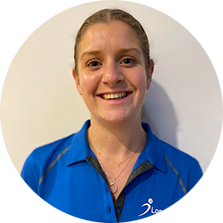Annabel investigates… Massage guns – are they worth the hype?
Have you brought yourself or a loved one a massage gun, or have you received one as a gift? There are so many options to pick from, with people saying it’s a better option than heading to the stores for a massage.
Today, Annabel and the Longevity Exercise Physiology teams at Drummoyne, Edgecliff, Marrickville, Bella Vista, Randwick, Pymble, Balmain and Neutral Bay discuss the different brands of massage guns and if they are really worth the hype and money.
Massage guns are becoming the latest trend and there are multiple claims being made as to what they do and how they do it. However, there is not much scientific evidence surrounding these devices.
“Massage guns work by repeatedly applying bursts of pressure to muscles in a rapid up-down motion, like a mini jackhammer, to deliver what’s known as percussive or vibration therapy (Cochrane, 2017).”
They are currently being utilised as an at-home muscle recovery tool and are often seen as a luxury item for elite athletes. As we look through the evidence, we will decipher which are the best brands and what is the scientific proof around them (Konrad, Glashüttner, Maren Reiner, Bernsteiner & Tilp, 2020).

The aim of massage guns is to increase blood flow, relieve muscle soreness, improve range of motion, and generally make people feel better, all without needing to see a professional. Some studies state that vibration therapy using massage guns could reduce delayed onset muscle soreness (the pain often felt during the 72 hours after a workout) and regain flexibility. Each massage gun comes with different attachments for the head – some are softer silicone which are used to absorb more force, and some are harder to deliver more pressure. These studies have only been able to show benefits to muscle soreness, flexibility, and fatigue in the short-term (Fuller, Thomson, Howe & Buckley, 2015).
You may be thinking – what is the difference between foam rolling, massage guns and other muscle recovery options? Which one is going to be the best for you?
Foam rolling uses myofascial release to decrease muscle tension. The pressure that you apply with a foam roller can help your body relax and release tight fascia. The advantages of a massage gun compared to a foam roller is that you can target specific areas of your body better than a foam roller, especially those that are hard to reach.

Although studies may show some benefits in the shorter term, looking at the longer-term benefits may not be as scientifically proven as we may think. Firstly, they are costly, averaging more than $100 for the basic models, reaching up to $900 for the higher-end models.
“Studies have shown that using a massage gun does not reduce soreness any better than stretching and therefore it may be more viable to perform stretching rather than using a massage gun.”
Another study also identified that they do not help improve strength and the different makes, models settings and/or frequencies do not make any difference to the improvement in performance for individuals using the massage guns. Individuals who use massage guns need to be aware that this equipment is not a magic cure or a quick fix (Martin, 2021).

Evaluating the evidence, we can determine that the short-term effects of using a massage gun largely outweigh the long-term impacts. It is proposed that they can increase blood flow, relieve muscle soreness, improve range of motion, and generally make people feel better. If this form of massage makes you feel better after a workout, it is shown to be an effective muscle recovery option.
If you want to understand more on how to use a massage gun or if they are suitable for you to use, call Longevity Exercise Physiology Edgecliff, Pymble, Marrickville, Randwick, Drummoyne, Balmain, Bella Vista, and Neutral Bay on 1300 964 002 to book in a session today!

Written by Annabel Bergman
References:
Konrad, A., Glashüttner, C., Maren Reiner, M., Bernsteiner, D., & Tilp, M. (2020). The Acute Effects of a Percussive Massage Treatment with a Hypervolt Device on Plantar Flexor Muscles’ Range of Motion and Performance. Journal Sports Science Medicine, 19(4), 690-694.
Cochrane, D. (2017). Effectiveness of using wearable vibration therapy to alleviate muscle soreness. European Journal Of Applied Physiology, 117(3), 501-509. doi: 10.1007/s00421-017-3551-y
Fuller, J., Thomson, R., Howe, P., & Buckley, J. (2015). Vibration Therapy Is No More Effective Than the Standard Practice of Massage and Stretching for Promoting Recovery From Muscle Damage After Eccentric Exercise. Clinical Journal Of Sport Medicine, 25(4), 332-337. doi: 10.1097/jsm.0000000000000149
Martin, J. (2021, January 20). A critical evaluation of percussion massage gun devices as a rehabilitation tool focusing on lower limb mobility: A literature review.
